|
|
|
Cambridge University Press
|
The Cambridge Companion to Eighteenth-Century Poetry analyzes major premises, preoccupations, and practices of English poets writing from 1700 to the 1790s. These specially-commissioned essays avoid familiar categories and single-author approaches to look at the century afresh. Chapters consider such large poetic themes as nature, the city, political passions, the relation of death to desire and dreams, appeals to an imagined future, and the meanings of 'sensibility'. Other chapters explore historical developments such as the connection between poetic couplets and conversation, the conditions of publication, changing theories of poetry and imagination, growing numbers of women poets and readers, the rise of a self-consciously national tradition, and the place of lyric poetry in thought and practice. The essays are well supported by supplementary material including a chronology of the period and detailed guides to further reading. Altogether the volume provides an invaluable resource for scholars and students. |
|
The twentieth-century English novel encompasses a vast body of work, and one of the most important and most widely read genres of literature. Balancing close readings of particular novels with a comprehensive survey of the last century of published fiction, this Companion introduces readers to more than a hundred major and minor novelists. It demonstrates continuities in novel-writing that bridge the century's pre and post-War halves and presents leading critical ideas about English fiction's themes and forms. The essays examine the endurance of modernist style throughout the century, the role of nationality and the contested role of the English language in all its forms, and the relationships between realism and other fictional modes: fantasy, romance, science fiction. Students, scholars and readers will find this Companion an indispensable guide to the history of the English novel. |
|
The essays in this collection cover the whole range of Irish drama from the late nineteenth-century melodramas which anticipated the rise of the Abbey Theatre to the contemporary Dublin of theatre festivals. A team of international experts from Ireland, the UK, the USA and Europe provide individual studies of internationally known playwrights of the period of the Literary Revival — Yeats, Synge, Lady Gregory, Shaw, Wilde, O'Casey — contemporary playwrights Brian Friel, Tom Murphy, Frank McGuiness and Sebastian Barry, in addition to emerging playwrights such as Martin McDonagh and Marina Carr. Further to studies of individual playwrights the collection also includes examination of the relationship between the theatre and its political context as this is inflected through its ideology, staging and programming. With a full chronology and bibliography, this collection is an indispensable introduction to one of the world's most vibrant theatre cultures. |
|
The literature of French-speaking countries forms a distinct body of work quite separate from literature written in France itself, offering a passionate creative engagement with their postcolonial cultures. This book provides an introduction to the literatures that have emerged in the French-speaking countries and regions of the world in recent decades, illustrating their astonishing breadth and diversity, and exploring their constant state of tension with the literature of France. The study opens with a wide-ranging discussion of the idea of francophonie. Each chapter then provides readers with historical background to a particular region and identifies the key issues that have influenced the emergence of a literature in French, before going on to examine in detail a selection of the major writers. These case studies tackle many of the key authors of the francophone world, as well as new, up-and-coming authors writing today. |
|
Must-have guides designed to introduce students and teachers to key topics and authors. More than a century after its beginnings, modernism still has the power to shock, alienate or challenge readers. Modernist art and literature remain thought of as complex and difficult. This introduction explains in a readable, lively style how modernism emerged, how it is defined, and how it developed in different forms and genres. Pericles Lewis offers students a survey of literature and art in England, Ireland and Europe at the beginning of the twentieth century. He also provides an overview of critical thought on modernism and its continuing influence on the arts today, reflecting the interests of current scholarship in the social and cultural contexts of modernism. The comparative perspective on Anglo-American and European modernism shows how European movements have influenced the development of English-language modernism. Illustrated with works of art and featuring suggestions for further study, this is the ideal introduction to understanding and enjoying modernist literature and art. |
|
Stowe, Hawthorne, Melville, and Twain: these are just a few of the world-class novelists of nineteenth-century America. The nineteenth-century American novel was a highly fluid form, constantly evolving in response to the turbulent events of the period and emerging as a key component in American identity, growth, expansion and the Civil War. Gregg Crane tells the story of the American novel from its beginnings in the early republic to the end of the nineteenth century. Treating the famous and many less well-known works, Crane discusses the genre's major figures, themes and developments. He analyses the different types of American fiction — romance, sentimental fiction, and the realist novel — in detail, while the historical context is explained in relation to how novelists explored the changing world around them. This comprehensive and stimulating introduction will enhance students' experience of reading and studying the whole canon of American fiction. |
|
The Cambridge Introduction to Russian Poetry presents the major themes, forms, genres and styles of Russian poetry. Using examples from Russia's greatest poets, Michael Wachtel draws on three centuries of verse, from the beginnings of secular literature in the eighteenth century up to the present day. The first half of the book is devoted to concepts such as versification, poetic language and tradition; the second half is organised along genre lines and examines the ode, the elegy, ballads, love poetry, nature poetry and patriotic verse. All poetry appears in the original followed by literal translations. This book is designed to give readers with even a minimal knowledge of the Russian language an appreciation of the brilliance of Russian poetry. |
|
The short story has become an increasingly important genre since the mid-nineteenth century. Complementing The Cambridge Introduction to the American Short Story, this book examines the development of the short story in Britain and other English-language literatures. It considers issues of form and style alongside — and often as part of — a broader discussion of publishing history and the cultural contexts in which the short story has flourished and continues to flourish. In its structure the book provides a chronological survey of the form, usefully grouping writers to show the development of the genre over time. Starting with Dickens and Kipling, the chapters cover key authors from the past two centuries and up to the present day. The focus on form, literary history, and cultural context, together with the highlighting of the greatest short stories and their authors, make this a stimulating and informative overview for all students of English literature. |
|
The Cambridge Introduction to Twentieth-Century American Poetry is designed to give readers a brief but thorough introduction to the various movements, schools, and groups of American poets in the twentieth century. It will help readers to understand and analyze modern and contemporary poems. The first part of the book deals with the transition from the nineteenth-century lyric to the modernist poem, focussing on the work of major modernists such as Robert Frost, T. S. Eliot, Ezra Pound, Wallace Stevens, Marianne Moore, and W. C. Williams. In the second half of the book, the focus is on groups such as the poets of the Harlem Renaissance, the New Critics, the Confessionals, and the Beats. In each chapter, discussions of the most important poems are placed in the larger context of literary, cultural, and social history. |
|
Victorian poetry was read and enjoyed by a much larger audience than is sometimes thought. Publication in widely-circulating periodicals, reprinting in book reviews, and excerpting in novels and essays ensured that major poets such as Tennyson, Browning, Hardy and Rossetti were household names, and they remain popular today. The Cambridge Introduction to Victorian Poetry provides an accessible overview of British poetry from 1830 to 1901, paying particular attention to its role in mass media print culture. Designed to interest both students and scholars, the book traces lively dialogues between poets and explains poets' choices of form, style and language. It also demonstrates poetry's relevance to Victorian debates on science, social justice, religion, imperialism, and art. Featuring a glossary of literary terms, a guide to further reading, and two examples of close readings of Victorian poems, this introduction is the ideal starting-point for the study of verse in the nineteenth century. |
|
This book provides a clear and helpful overview of the thought of Emmanuel Levinas, one of the most significant and interesting philosophers of the late twentieth century. Michael L. Morgan presents an overall interpretation of Levinas's central principle that human existence is fundamentally ethical and that its ethical character is grounded in our face-to-face relationships with other people. He explores the religious, cultural, and political implications of this insight for modern Western culture and how it relates to our conception of selfhood and what it is to be a person, our understanding of the ground of moral values, our experience of time and the meaning of history, and our experience of religious concepts and discourse. The book includes an annotated list of recommended readings and a selected bibliography of books by and about Levinas. It will be an excellent introduction to Levinas for readers unfamiliar with his work, and even for those without a background in philosophy. |
|
Modernist poems are some of the twentieth-century's major cultural achievements, but they are also hard work to read. This wide-ranging introduction takes readers through modernism's most famous poems and some of its forgotten highlights to show why modernists thought difficulty and disorientation essential for poetry in the modern world. In-depth chapters on Pound, Eliot, Yeats and the American modernists outline how formal experiments take on the new world of mass media, democracies, total war and changing religious belief. Chapters on the avant-gardes and later modernism examine how their styles shift as they try to re-make the community of readers. Howarth explains in a clear and enjoyable way how to approach the forms, politics and cultural strategies of modernist poetry in English. |
|
The basic unit of nature — the ecosystem — is a special form of wealth, which we can think of as a stock of natural capital. However, perhaps because this capital is free, we have tended to view it as limitless, abundant and always available for our use, exploitation and conversion. Capitalizing on Nature shows how modeling ecosystems as natural capital can help us to analyze the economic behavior that has led to the overuse of so much ecological wealth. It explains how this concept of ecosystem as natural capital sheds light on a number of important issues, including landscape conversion, ecological restoration, ecosystem resilience and collapse, spatial benefits and payments for ecosystem services. The book concludes by focusing on major policy challenges that need to be overcome in order to avert the worsening problem of ecological scarcity and how we can fund novel financing mechanisms for global conservation. |
|
Competition between firms is usually the most effective way of delivering economic efficiency and what consumers want. However, there is a balance to be struck. Firms must not be over-regulated and so hampered in their development of innovative products and new strategies to compete for customers. Nor must they be completely free to satisfy a natural preference for monopoly, which would give them higher profits and a quieter life. The economic role of competition policy (control of anticompetitive agreements, mergers and abusive practices) is to maintain this balance, and an effective policy requires a nuanced understanding of the economics of industrial organization. Cases in European Competition Policy demonstrates how economics is used (and sometimes abused) in competition cases in practical competition policy across Europe. Each chapter summarizes a real case investigated by the European Commission or a national authority, and provides a critique of key aspects of the economic analysis. |
|
Originally published during the early part of the twentieth century, the Cambridge Manuals of Science and Literature were designed to provide concise introductions to a broad range of topics. They were written by experts for the general reader and combined a comprehensive approach to knowledge with an emphasis on accessibility. Cash and Credit by D. A. Barker was first published in 1910. It was intended to give the reader a firm grasp of the principles of finance and to provide a basis for the further study of monetary theory. |
|
This innovative textbook examines commercial law and the social and political context in which it develops. Topical examples, such as funding for terrorism, demonstrate this fast-moving field's relevance to today's concerns. This wide-ranging subject is set within a clear structure, with part and chapter introductions setting out the student's course of study. Recommendations for further reading at the end of every chapter point the reader to important sources for advanced study and revision questions encourage understanding. The extensive coverage and detailed commentary has been extensively market tested to ensure that the contents are aligned with the needs of university courses in commercial law. |
|
Are you looking for a genuine introduction to the linguistics of English that provides a broad overview of the subject that sustains students' interest and avoids excessive detail? Introducing English Linguistics accomplishes this goal in two ways. First, it takes a top-down approach to language, beginning with the largest unit of linguistic structure, the text, and working its way down through successively smaller structures (sentences, words, and finally speech sounds). The advantage of presenting language this way is that students are first given the larger picture — they study language in context — and then see how the smaller pieces of language are a consequence of the larger goals of linguistic communication. Second, the book does not contain invented examples, as is the case with most comparable texts, but instead takes its sample materials from the major computerised databases of spoken and written English, giving students a more realistic view of language. |
|
Morphology is the study of how words are put together. A lively introduction to the subject, this textbook is intended for undergraduates with relatively little background in linguistics. Providing data from a wide variety of languages, it includes hands-on activities such as 'challenge boxes', designed to encourage students to gather their own data and analyse it, work with data on websites, perform simple experiments, and discuss topics with each other. There is also an extensive introduction to the terms and concepts necessary for analysing words. Topics such as the mental lexicon, derivation, compounding, inflection, morphological typology, productivity, and the interface of morphology with syntax and phonology expose students to the whole scope of the field. Unlike other textbooks it anticipates the question 'Is it a real word?' and tackles it head on by looking at the distinction between dictionaries and the mental lexicon. |
|
A fashionable and well-informed interest in Italy was a feature of English intellectual life in the first half of the 19th century. Most cultured people could read Italian and knew something of Italian literature. Young ladies learned to sing in Italian, whilst young gentlemen completed their education with a tour in Italy. Painters went there to make copies from Raphael; architects to sketch the Graeco-Roman ruins. Men of letters in particular found themselves drawn to Italy and much Romantic literature reflects this interest; many works owe their origin to Italian literature. In this book, which was originally published in 1957, Dr Brand traces the growth and decline of the social fashion which made Italy the goal of so many cultured Englishmen. He examines in particular the extent and significance of Italy's fascination for the English romantic writers, and traces the effects of the fashion in music, painting, architecture and political affairs. |
|
Game theory is concerned with strategic interaction among several decision-makers. In such strategic encounters, all players are aware of the fact that their actions affect the other players. Game theory analyzes how these strategic, interactive considerations may affect the players' decisions and influence the final outcome. This textbook focuses on applications of complete-information games in economics and management, as well as in other fields such as political science, law and biology. It guides students through the fundamentals of game theory by letting examples lead the way to the concepts needed to solve them. It provides opportunities for self-study and self-testing through an extensive pedagogical apparatus of examples, questions and answers. The book also includes more advanced material suitable as a basis for seminar papers or elective topics, including rationalizability, stability of equilibria (with discrete-time dynamics), games and evolution, equilibrium selection and global games. |
|